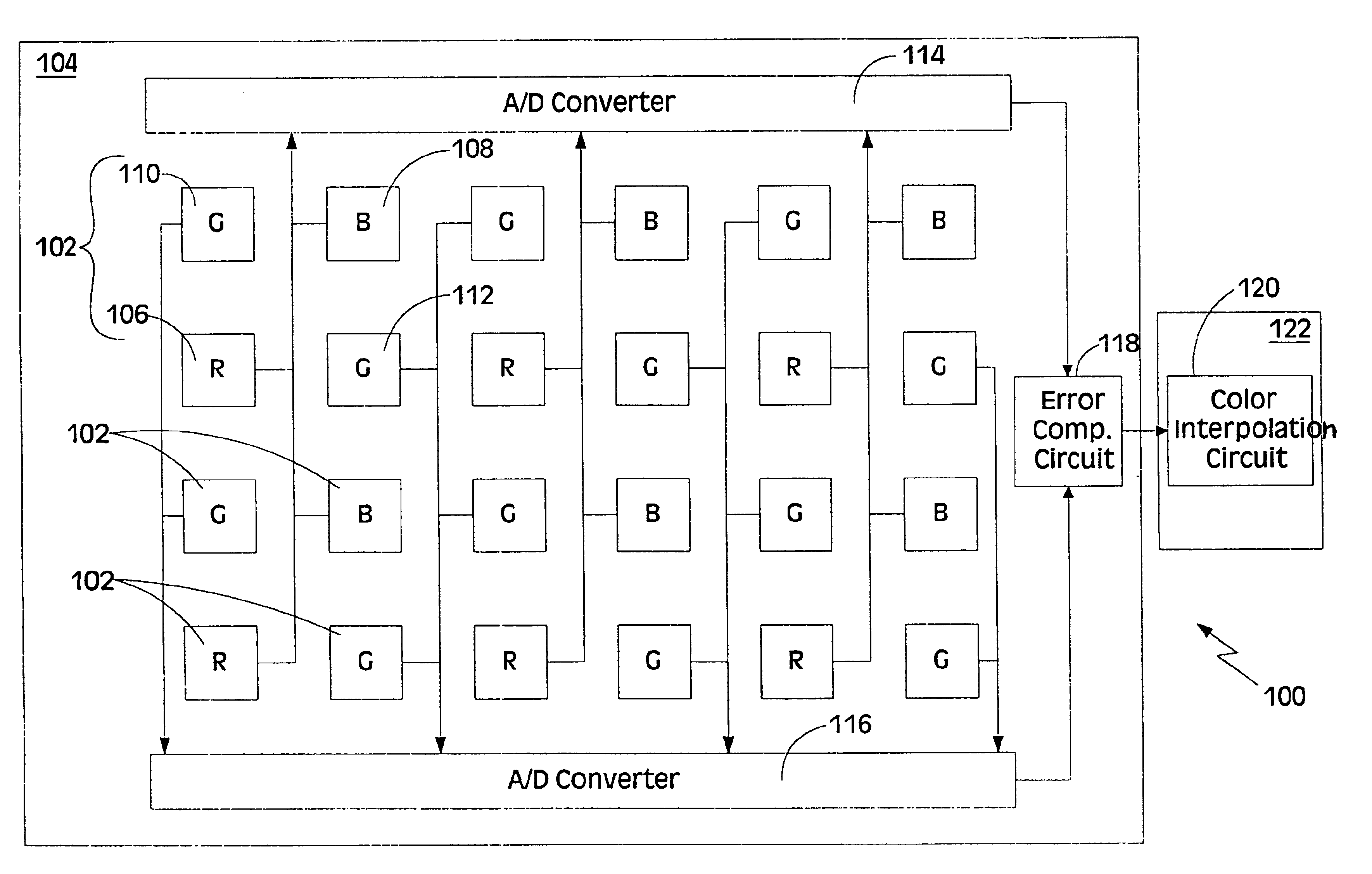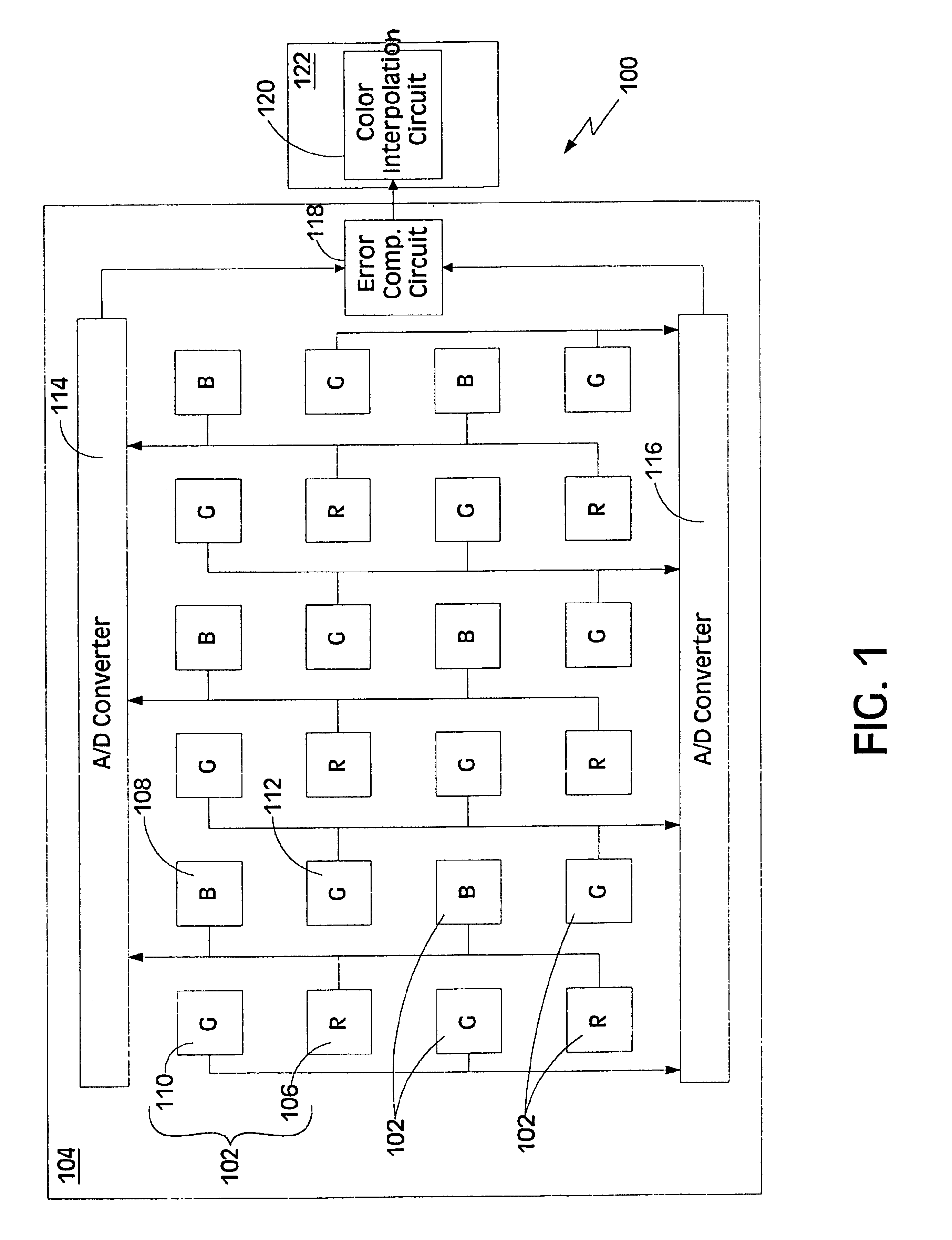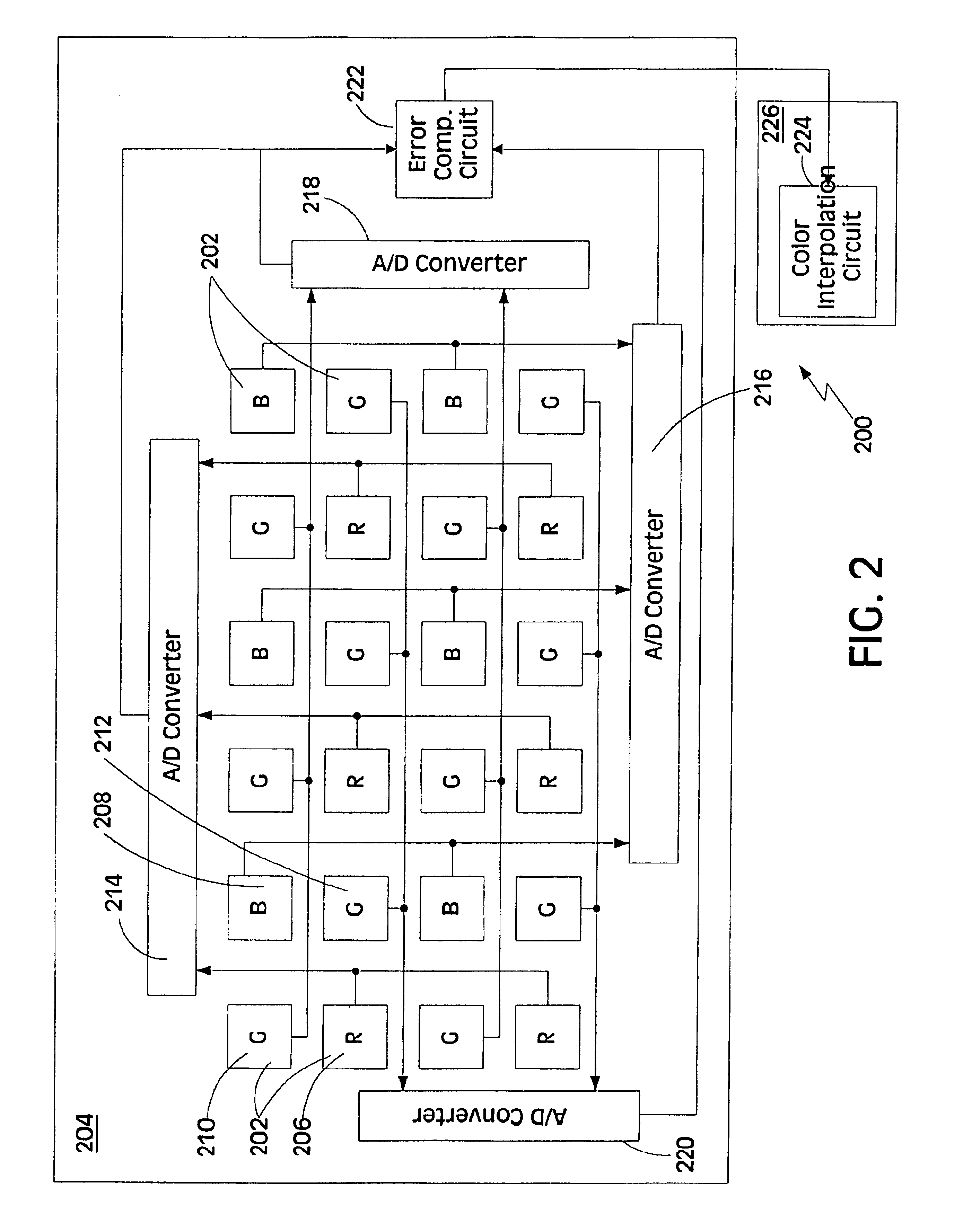High sensitivity snap shot CMOS image sensor
a high-sensitivity, image sensor technology, applied in the direction of pulse technique, radiation control device, optical radiation measurement, etc., can solve the problems of affecting the quality of snap shots is not high, so as to achieve the effect of saving power and higher clock ra
- Summary
- Abstract
- Description
- Claims
- Application Information
AI Technical Summary
Benefits of technology
Problems solved by technology
Method used
Image
Examples
Embodiment Construction
FIG. 1 illustrates a solid state imaging device 100 in accordance with the present invention. The imaging device 100 comprises a two-dimensional array of image pixels 102 disposed on a chip 104 using four color channels (one red, one blue and two greens) to define a color image. Each pixel 102 is either a red pixel 106 having a red photodiode, a blue pixel 108 having a blue photodiode or a green pixel 110, 112 having a green photodiode. The standard approach uses identical photodiode construction for each of the sensing elements. The green photodiode responds to green light since only green light is allowed to strike the photodiode through the filter element. In a similar manner, a preferential response is created to blue and red light.
The output of each pixel 102 is a signal proportional to the amount of light incident on the pixel 102. Accordingly, the output of the red pixel 106 is a signal proportional to the amount of red light incident on the pixel 106. Similarly, the output o...
PUM
 Login to View More
Login to View More Abstract
Description
Claims
Application Information
 Login to View More
Login to View More - R&D
- Intellectual Property
- Life Sciences
- Materials
- Tech Scout
- Unparalleled Data Quality
- Higher Quality Content
- 60% Fewer Hallucinations
Browse by: Latest US Patents, China's latest patents, Technical Efficacy Thesaurus, Application Domain, Technology Topic, Popular Technical Reports.
© 2025 PatSnap. All rights reserved.Legal|Privacy policy|Modern Slavery Act Transparency Statement|Sitemap|About US| Contact US: help@patsnap.com



